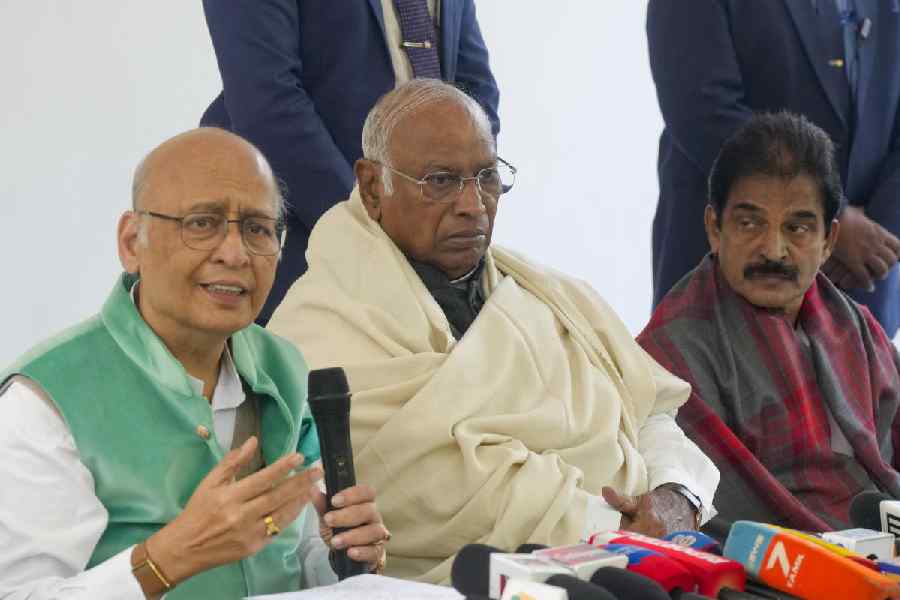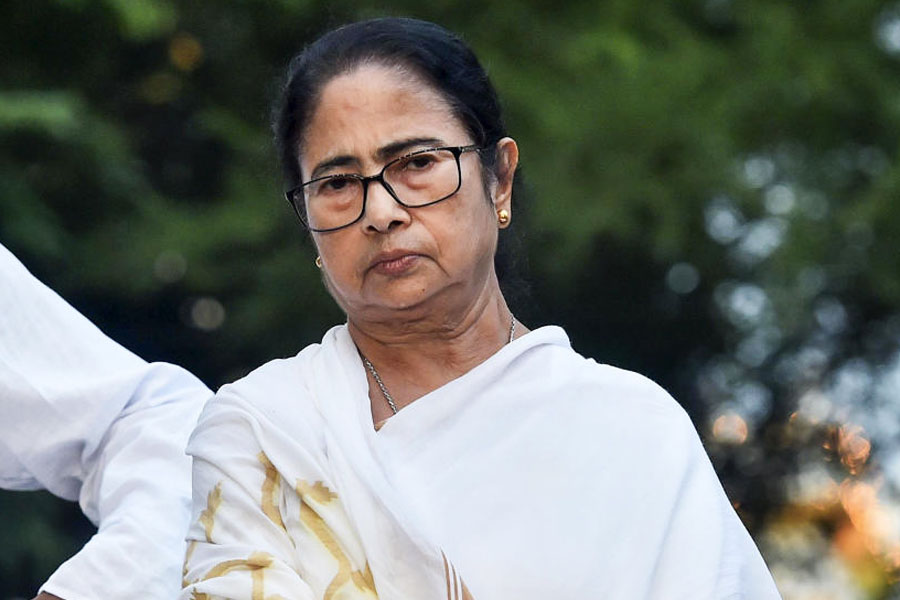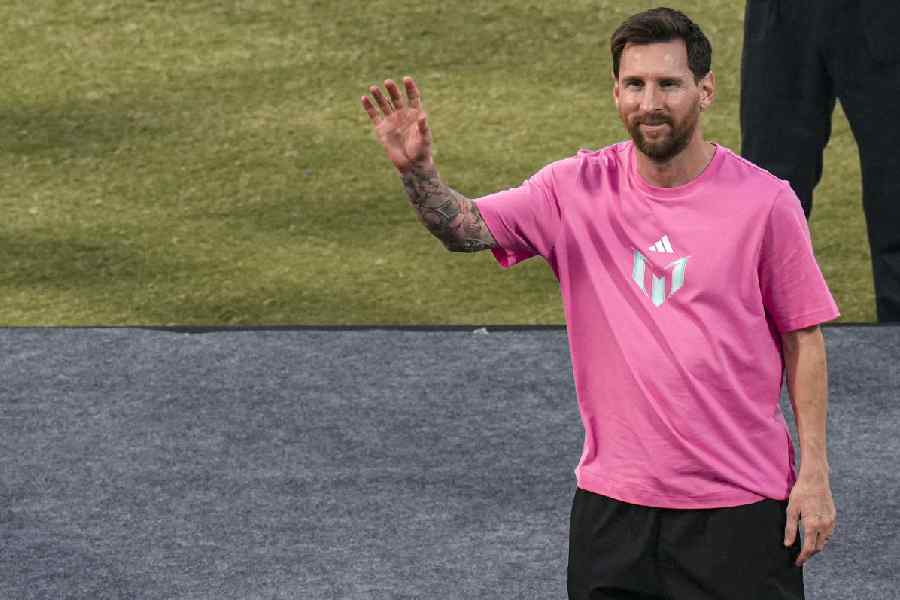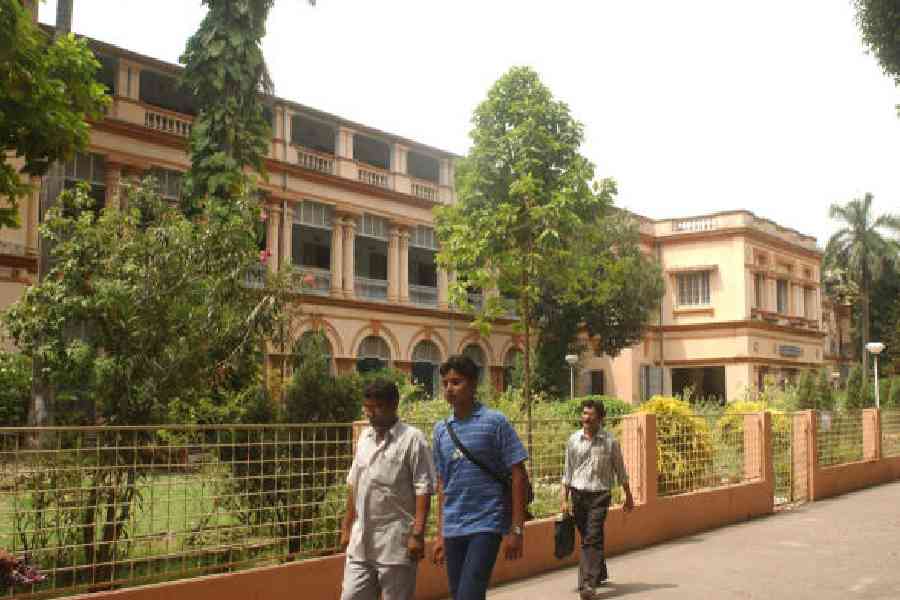 |
Lou Majaw is wearing shorts so short that you could almost miss them. The Khasi musician has been flying from Shillong to Visakhapatnam, Bangalore, Calcutta and back to Shillong, organising a birthday bash that’s the talk of his home town. With his long white hair and the vigour that typifies him, he could pass off as a young man in a hurry. He is, however, just six years younger than the birthday boy, Bob Dylan.
That Majaw is 64 years young doesn’t surprise anyone anymore. Gone are the days when hitting 60 meant a rickety trek over the hill. Today, 60 plus is Shobhaa Dé, almost as svelte as she was at 30.
Age is a vague little word in the dictionary these days. Age-appropriateness — yardsticks that told you how to behave when you’re older — is fast dying, say experts.
Take Mumbai-based property investor Praveen Anand, who, at 67, could give people half her age a run for their money. When this mother of two well-known actors is not visiting far-flung property sites, she is accompanying Sakshi and Shilpa Shivanand on outdoor shoots. If she is not travelling abroad, she is attending kitty parties and shopping with friends. “I believe as long as you live, you must live a full life,” she says.
Just two years ago, she was gripped with fear when age started creeping up on her. Dulled by arthritic pain, she consulted Dr Deepak Chaturvedi, who specialises in anti-ageing medicine and is part of a growing tribe of doctors promising a panacea for ageing.
 |
 |
| AGE NO BAR: A man at an anti-ageing clinic in Chennai (top); and Lou Majaw |
At his clinic AMAYA in suburban Mumbai, she was prescribed hormones, vitamins and a skin cream to ward off wrinkles. Today, Praveen, who believes “age is just a number”, advocates anti-ageing treatments and spends almost Rs 10,000 a month on them.
A spate of developments — including the mushrooming of clinics and gyms — has helped people battle age. With fertility clinics round the corner, women are having their first child at 40. People are working after retirement. And with adventure sports facilities galore, they are parachuting into their seventies. India is seeing the emergence of the amortals — a word coined in the West to describe people who refuse to age.
“We live in a youth-based culture,” says geropsychology professor P.V. Ramamurti of the Centre for Research on Ageing, Tirupati. Ramamurti stresses the need for evolving an “index” for ageing, apart from the chronological age. “You need a functional index to mark ageing. Today people are forced to retire at 58 when they are peaking.”
Anil Thapar, who retired from the Indian Air Force in 1993, would agree. Thapar, 64, is an avid hand glider. In March last year, he participated in a reality TV show where he scored a world record for cutting ribbons and releasing 5,730 balloons while hand gliding.
Leading a sedate home-bound life after retirement was never an option for him. “That way, I would have aged fast. Now I feel mentally and physically young,” he says.
The term “middle age” died with the era of actor Jeetendra advertising a pick-me-up called 30+ tablets. The generation born in the 1950s, having tasted the economic prosperity of new India, is clinging on to the heady feeling of making money and being self-sufficient.
The number of people above 60 is growing as well. In 2010, the population of 60-plus in India was 78 million. By 2030, it is expected to rise to 179 million. Not surprisingly, organised groups are helping senior citizens chuck their walking sticks.
Dignity Foundation, headquartered in Mumbai and with chapters in Bangalore, Chennai, Calcutta and Pune, runs Chai Masti, a club where sessions are conducted around various themes, including music, dance, books, yoga and even bridge. In coffee-drinking Bangalore, the club is called Coffee Chowdi and has 1,500 members. “We organise lectures and interactive sessions on various topics,” says N.B. Jayaprakash, director, Dignity Foundation, Bangalore.
“Earlier, people were expected to close shop once their children were married. Today, this group wants to go out and get a life,” says Dr Shivaram Bharadwaj, senior consultant, plastic surgeon, Apollo Hospitals in Chennai.
Keeping fit is one way of doing so. A Chennai gym owner says the number of senior citizens pumping iron has shot up in one year. “The oldest woman in my gym is 66,” says Ajit Shetty, managing director, Score Health Club.
Across the world, and even in India, doctors are studying the elixir of life. Three years ago, Avesthagen, a Bangalore-based biotechnology firm, initiated a study on the Parsi community to determine the genetic basis of their longevity and age-related disorders. “The focus of one part of the project was to discover the gene(s) responsible for conferring longevity since the Parsis are known to live long,” says chief scientist Sami Guzder. “Work is still on.”
For women, the bid to arrest time often means late children. “Over the last decade, my hospital has seen an almost 50 per cent rise in women above 40 wanting to become first-time mothers,” says Bangalore-based Kamini Rao, a leading infertility specialist whose oldest patient was 50.
Of course, not everyone agrees that age is being successfully battled. “Our cells are programmed to age from birth. Ageing can never be reversed,” avers Chennai-based nephrologist D. Diwakar. Yet caution is being thrown to the winds as people flock to clinics to try anything from temporary cosmetic changes such as botox injections for removing wrinkles to laser solutions to slice off fat and from ayurvedic solutions to rev up faltering memories to injecting themselves with hormones and vitamins to keep themselves in the reckoning of life.
No wonder Dr Jeya Prakash, age management consultant and plastic surgeon, spends 10 days a month away from his Harley Street practice in London and in his one-year-old clinic at the Ticel Bio Park, Chennai.
“It is not geriatric medicine,” he says shortly. “We do not look at the superficial aspect of ageing but get to the root cause.” Dr Prakash, who has done 7,000 liposuctions (removing fat from the body) in his 25 years of practice, also provides entire cosmetic makeovers in his clinic, ranging from scarless face lifts to aesthetic sculpting of the face. “They might be my ‘bread and butter’ but they are all temporary and just ‘skin deep’ treatments,” he adds.
People, however, are lapping it all up. “The demand for anti-ageing treatments is rising at the rate of 30 per cent every year, surgical at 20 per cent and non-surgical at 30 per cent,” says Dr Anup Dhir, cosmetic surgeon and secretary of the Indian Association of Aesthetic Plastic Surgeons.
Botox has become an ordinary “office procedure” today. Laser peels, dermal fillers, chemical peels, phototherapy, non-surgical radiofrequency face lifts, skin rejuvenation and facial reshaping too are not lagging behind.
Besides pumping his clients with vitamins, Dr Chaturvedi prescribes more potent treatments such as the female hormone progesterone, testosterone, a steroid hormone called DHEA and bioidentical hormone replacement therapy for menopausal women.
He cites the case of a Bollywood music director in his forties who consulted him after going through a phase when his energies and drive dropped. “He was suffering from low testosterone and vitamin B 12,” he says. A month and a hormone and vitamin cocktail later, he was back on his feet and even referred a member of Parliament to him, reveals Dr Chaturvedi.
Nephrologist Dr Diwakar advises the use of hormones in a “judicious” manner. “It has to be done by a proper doctor and blood pressure has to be monitored periodically. It is not a panacea but it is not harmful,” he adds.
Calcutta-based dermatologist Surajit Biswas too advises caution. He cites the example of a 40-something model-cum-actor in the city who religiously opts for cosmetic anti-ageing treatments, but regularly ends up at his clinic to get rid of post-cosmetic complications. “To control ageing, one needs to follow some simple rules — protect your skin from the sun, ensure a healthy level of vitamin A, use moisturisers and lead a healthy lifestyle.”
At the end of the day, adds Dr Piya Roy, consultant gynaecologist, AMRI Hospitals, Calcutta, people have to bring about “substantive” changes in their lifestyle.
Musician Majaw — who once smoked three packs of cigarettes every day — knows that. “But it’s of no use to count the number of years that I have spent on earth. I look forward to my life every day,” he says.
Side-effects
of hormone replacement therapy
- Testosterone and DHEA (steroid hormone): Acne, hair loss, abnormal body hair growth, itching and enlarged prostate in susceptible patients
- Progesterone: Dryness of vagina
- Estradiol: Increase in breast size.
Bio-identical hormone replacement therapy (BIHRT) should be monitored by a trained doctor.










